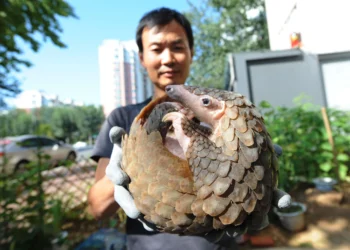Biology has revolutionized due to gene editing technology, creating new opportunities for academic study and valuable applications. CRISPR-Cas9, a flexible gene-editing system that permits precise DNA sequence alterations, is a ground-breaking technique.
Given its potential to heal genetic abnormalities, create products that are resistant to illness, and even alter the genomes of pets, CRISPR-Cas9 has drawn a lot of attention. In this article, we examine the numerous ways that CRISPR-Cas9 may be used to change the sequences of pet genes.
Generation of Genetically Modified CRISPR/Cas9-Mediated Birds
Creating genetically altered birds using CRISPR-Cas9 technology has become a fascinating field of study with many potential applications. By gene editing, scientists have induced precise adjustments in bird genomes, paving the path for birds with improved features and increased attributes.
One of the popular uses of CRISPR-Cas9 in creating genetically altered birds is feather color alteration. Researchers have successfully utilized this method to change the plumage color of various bird species, including Japanese quails. The look of birds has significantly changed due to scientific interventions targeting genes that create feather color. The potential business benefit of these alterations goes beyond aesthetic appeal since specific feather colors are in great demand.
In addition to feather color, CRISPR-Cas9 has helped create birds with improved disease resistance through codon optimization. Researchers have created genetically engineered birds more resistant to particular illnesses, such as avian influenza, by focusing on and altering immune response genes. This technology offers a sustainable and effective method of combating infectious diseases, lowering the likelihood of extensive outbreaks, and guaranteeing the health and well-being of bird populations, which has significant consequences for the poultry sector.
Creating genetically altered birds with minimal environmental effects is another research topic. Researchers are looking at altering phosphorus metabolism genes to lower the amount of phosphorus excreted in chicken manure. This strategy tries to solve environmental issues, including the eutrophication of water bodies related to extensive chicken rearing. It is conceivable to lessen the environmental impact of the chicken business by developing genetically engineered birds with optimized phosphorus use.
CRISPR/Cas9-Mediated Genome Editing in Cats
In addition to making substantial progress in avian species, CRISPR-Cas9 technology has also shown promise in the study of feline genetics. By using gene editing, researchers are investigating the potential uses of CRISPR-Cas9 in altering cat gene sequences, with consequences for both cat owners and general feline health.
One prominent area of emphasis is the creation of hypoallergenic cats. Many people experience cat allergies, which are frequently brought on by specific proteins found in cat saliva, skin, and dander. Researchers are using CRISPR-Cas9 to target and repress the genes that produce these allergenic proteins.
It could be feasible to generate cats with reduced or non-allergenic protein production by altering these gene sequences, hence lowering the likelihood of allergy responses in vulnerable populations. The ability to enjoy the company of cats without experiencing the related allergy symptoms is one of the possible benefits of this application for cat owners who have allergies.
CRISPR-Cas9 also provides a potent tool for examining the genetics of cats, particularly their distinctive coat patterns and colors. Researchers can learn more about the biological processes behind these features by altering the coat pigmentation-related genes. This information can help researchers better understand feline genetics and guide breeding initiatives aiming to produce cats with specific coat patterns or colors. The capacity to change such features can find uses in conservation efforts, breed preservation, and even medicinal objectives, albeit aesthetic and ethical concerns should be weighed.
It is important to remember that appropriate and ethical use is essential with any genetic alteration technique. In order to guarantee that gene editing is carried out in a manner that prioritizes animal welfare and considers long-term effects, adequate regulatory frameworks and guidelines should be in place.
CRISPR/Cas9-Mediated Genome Editing in Dogs
With the development of CRISPR-Cas9 technology, canine genetics has also experienced tremendous breakthroughs. CRISPR-Cas9 gene editing has the potential to alter physical characteristics and treat a variety of genetic diseases that affect dogs, thereby enhancing their health and well-being.
Fighting genetic disorders in dogs is an essential use of CRISPR-Cas9 in this species. Canines can inherit a number of diseases, including deafness, cancers, and muscular dystrophy. Scientists hope to create novel therapies or completely cure these disorders by focusing on and altering the precise genes linked to these ailments.
With a clear and compelling technology for editing the dog genome offered by CRISPR-Cas9, there is optimism for more successful therapeutic interventions and an improvement in the general standard of living.
Additionally, CRISPR-Cas9 technology gives a chance to change the morphological characteristics of canines. Both breeders and pet owners are interested in the coat color, size, and other qualities. Researchers may be able to breed dogs with specific coat colors, patterns, or sizes by focusing on and altering the genes causing these features. In order to protect animal welfare and preserve breed standards, it is crucial to approach this application cautiously and prioritize ethical concerns.
CRISPR-Cas9 has the potential to alter certain features as well as contribute to the genetic analysis of canines. With the use of this technology, scientists may look into the underlying genetic processes that underlie a variety of traits and behaviors, learning more about the intricate interactions between genes and canine features. Understanding dog genetics, evolution, and the possible effects of selective breeding may be improved with the use of this information.
Conclusion
The gene editing technique CRISPR-Cas9 has emerged as a game-changer, revolutionizing genetics and providing a wide range of applications. CRISPR-Cas9 allows altering the gene sequences in chickens, cats, and dogs, resulting in the development of desirable features, excellent health, and improved welfare.
Although the technology has immense potential, ethical questions and legal frameworks must be carefully considered to ensure ethical and practical implementations. The future potential for changing pet gene sequences using CRISPR-Cas9 is enormous. It has the potential to completely alter the pet industry as research and development in gene editing continue.










